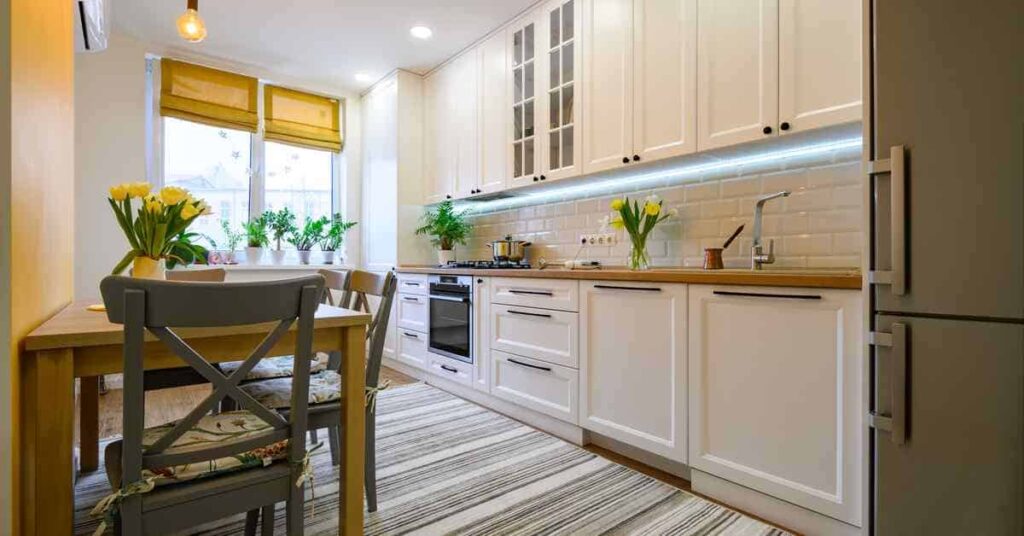Building basement stairs can be a rewarding DIY project that enhances the functionality of your home. Whether you’re replacing old stairs or constructing new ones, this guide will walk you through the process step-by-step. With the right tools, materials, and careful planning, you can successfully build safe and sturdy basement stairs.
Tools and Materials You Will Need
Before you begin, gather the following tools and materials:
Tools
- Measuring tape
- Circular saw
- Carpenter’s square
- Level
- Drill and drill bits
- Hammer
- Screwdriver
- Chalk line
- Safety goggles
- Work gloves
Materials
- Lumber for stringers (typically 2×12 boards)
- Treads (the horizontal part you step on)
- Risers (the vertical part between each tread)
- Nails or screws
- Wood glue
- Sandpaper or electric sander
- Wood stain or paint (optional)
Step-by-Step Guide
Step 1: Plan and Measure
- Calculate the Total Rise: Measure the total height from the basement floor to the upper floor. This is your total rise.
- Determine the Number of Steps: Divide the total rise by the desired riser height (usually 7 to 8 inches). Round to the nearest whole number to determine the number of steps.
- Calculate Tread Depth: The tread depth is typically between 9 to 11 inches. Make sure the combination of riser height and tread depth is comfortable for walking.
- Determine Stringer Length: Use the formula: Stringer Length=(Total Rise2+Total Run2)\text{Stringer Length} = \sqrt{(\text{Total Rise}^2 + \text{Total Run}^2)}Stringer Length=(Total Rise2+Total Run2). The total run is the tread depth multiplied by the number of treads.
Cut the Stringers
- Mark the Stringers: Use a carpenter’s square to mark the rise and run on a 2×12 board. Start from one end of the board and continue marking until all steps are drawn.
- Cut the Stringers: Carefully cut along the lines using a circular saw. Make sure the cuts are precise for the stairs to be level and sturdy.
- Test Fit the Stringers: Place the stringers in position to ensure they fit correctly and adjust if necessary.
Install the Stringers
- Attach the Stringers: Secure the top of each stringer to the upper floor using screws or nails. Ensure they are level and equally spaced.
- Secure the Bottom: Attach the bottom of each stringer to the basement floor. Use a level to make sure they are straight.
Attach the Treads and Risers
- Cut the Treads and Risers: Cut the boards to the appropriate width and length using a circular saw.
- Install the Risers: Starting from the bottom, attach each riser to the stringers using wood glue and screws. Ensure they are flush with the top edge of each step.
- Attach the Treads: Secure the treads on top of the stringers and risers, ensuring they overhang slightly for safety and comfort. Use wood glue and screws for stability.
Finishing Touches
- Sand the Stairs: Use sandpaper or an electric sander to smooth out any rough edges or surfaces.
- Apply Stain or Paint: If desired, apply a wood stain or paint to the stairs to protect the wood and enhance the appearance.
- Install a Handrail: For safety, install a handrail alongside the stairs. Ensure it is at a comfortable height and securely attached.
Inspect and Test
- Check for Stability: Walk up and down the stairs to ensure they are stable and secure.
- Make Adjustments: If necessary, make adjustments to ensure the stairs are safe and comfortable to use.
Tips for Success
- Safety First: Always wear safety goggles and gloves when cutting and handling wood.
- Measure Twice, Cut Once: Accurate measurements are crucial for building safe and functional stairs.
- Follow Building Codes: Check local building codes for stair dimensions and requirements to ensure compliance.
Conclusion
Building basement stairs is a manageable DIY project with the right tools, materials, and planning. By following this step-by-step guide, you can create a sturdy and safe staircase that improves access to your basement and adds value to your home. Happy building!















